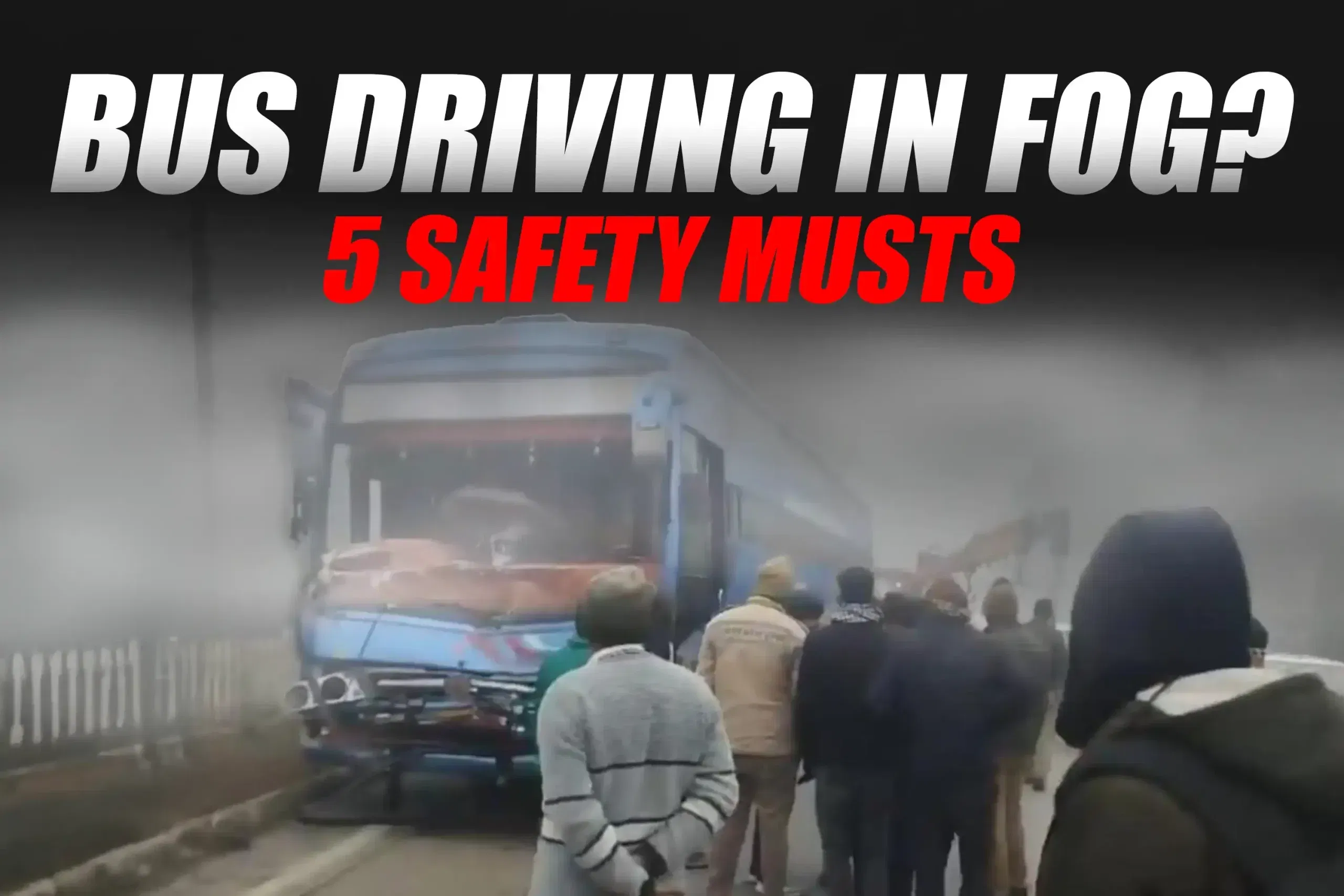While winter is on our doorstep, bus operators face special challenges while operating on the roads in India. The cold, thick fog and low visibility create dangers for bus operators and users. Keeping passengers safe while operating buses in winter requires planning and preparation. With Diwali quickly approaching this also adds pollution, which adds emissions and low visibility to driving conditions.
Driving in Fog & Low Visibility
While operating in fog, visibility diminishes what drivers otherwise see. Low visibility is not only difficult to judge, but drivers simply miss traffic signs, lane markings and vehicles (some close up). The fog can sometimes be somewhat dense and persist for longer durations due to Diwali pollution. It is essential to understanding operation in the fog and low visibility is generally required.
Main Steps to Bus Operator Fog Preparedness
Bus operators need to prepare in a systematic way. Proper bus operator fog preparation involves driver training, vehicle upkeep, operating changes and technology adoption. Each aspect promotes safety and efficiency under conditions of foggy winter weather.

1. Driver Training
Driver training is the first line of defense. Drivers need to:
- Slow down and keep a safe distance.
- Utilize fog lights and low beams appropriately.
- Prevent glare from opposing vehicles.
- Know the effects of Diwali pollution, which can reduce visibility.
Practice exercises and regular refresher courses enhance readiness for driving in low visibility.
2. Vehicle Maintenance
Readiness of the vehicle guarantees winter bus safety. Operators need to check:
- Headlights, fog lamps and tail lamps for functionality.
- Windshield wipers and washer fluids.
- Tires and brakes for driving in icy or wet conditions.
- Mirrors and windows for unobstructed visibility.
A standardized winter driving checklist ensures safety checks are carried out uniformly on all buses.
3. Technology and Safety Equipment
New commercial vehicles employ technology to enhance safety. In low visibility driving, operators have the ability to use:
- GPS and route planning for the prevention of high-risk zones.
- Anti-collision sensors and automatic braking systems.
- Heated mirrors, defrosters and anti-fog sprays.
Such equipment improves visibility and minimizes accidents in foggy weather.
4. Operational Adjustments
Operators tend to alter procedures in winter. Adjustments involve:
- Scheduling trips outside peak hours of dense fog, particularly early morning.
- Restricting boarding by passengers during severe fog.
- Regular communication with drivers for updating road conditions.
Operational modifications supplement vehicle and driver readiness in bus operator fog preparation.
5. Awareness of the Environment
Fog and Diwali air pollution impacts together form dangerous smog-fog conditions. Operators should include environmental monitoring in planning. Drivers need to be vigilant and employ lights tactically in order to move safely.
Conclusion
Winter poses challenges for bus operators and their personnel. Fog, low visibility and Diwali emissions all add to the hazards involved during winter. The three areas in the systematic safety process include pre-emptive bus operator fog preparedness, those intensive driver safety training and vehicle inspections in winter months, technology, operational adjustments and a winter driving checklist will assure coach reliability and safety. The last three aspects will reduce risks to passengers, drivers and the support from the operator. The first three, will make winter roads much safer, operationally efficient and save time and management headaches.
For more articles and news, stay updated with 91trucks. Subscribe to our YouTube channel and follow us on Facebook, Instagram and LinkedIn for the latest videos and updates from the automotive world!
Related Stories:
Modern Bus Safety: Hidden Features and How They Help in Disasters
Sleeper Buses: How India’s Night Buses Are Shaping Intercity Travel









